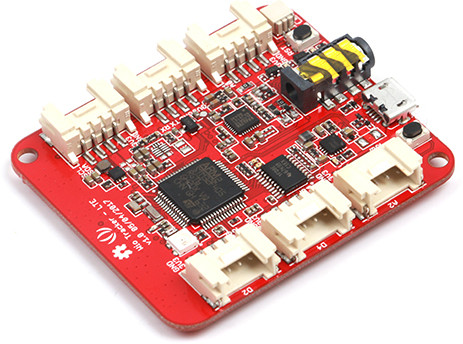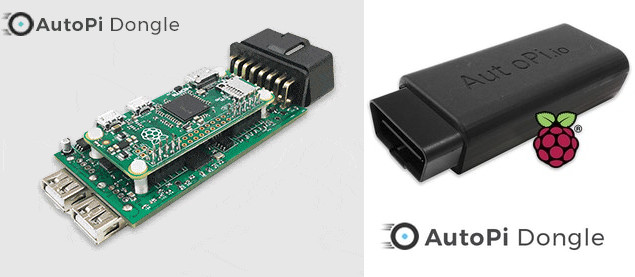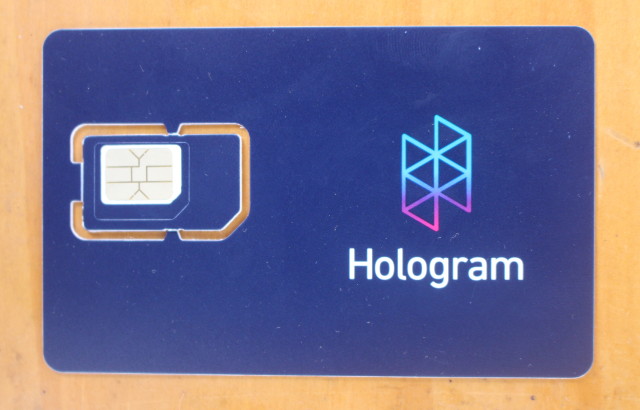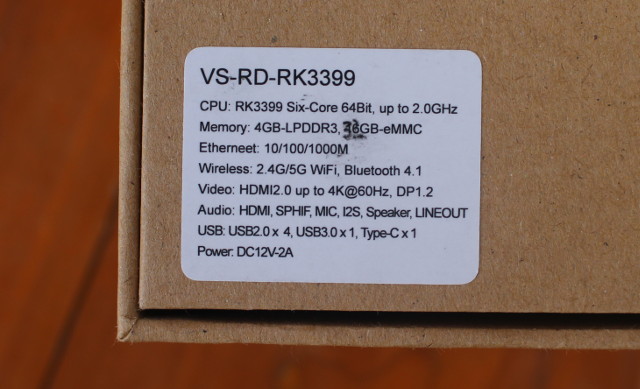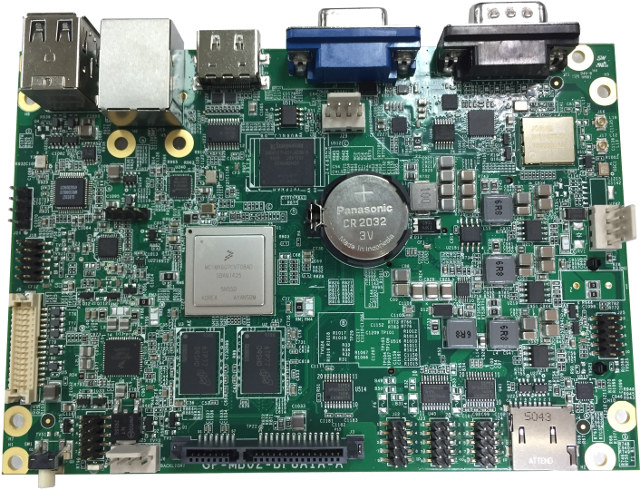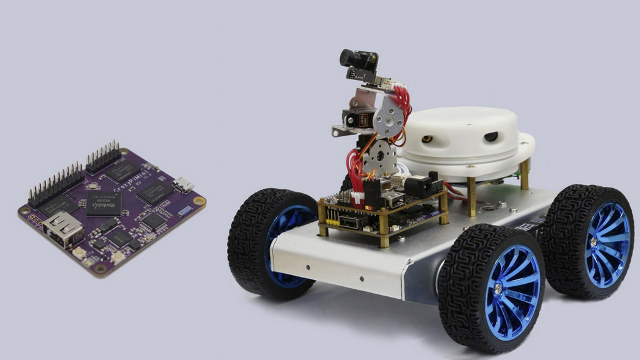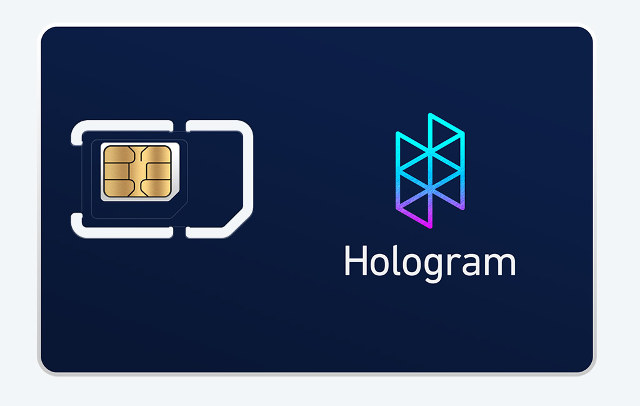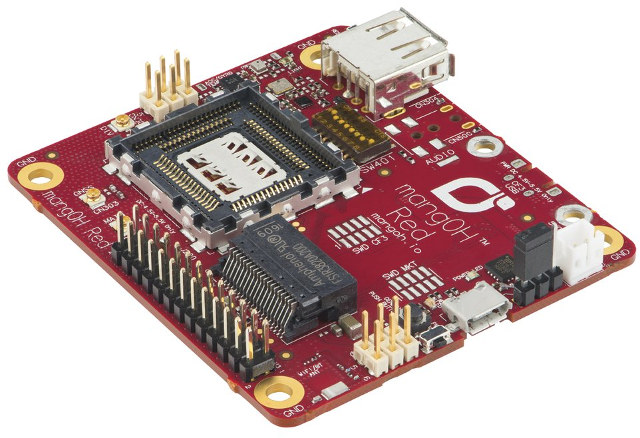Seeed Studio launched Wio GPS tracker with a 2G GSM module a few months ago, and while it should work in some countries, others are phasing out 2G networks, and only support 3G or 4G. The company has now launched an update with Wio LTE board with the same form factor, and most of the same features except they replaced the 2G/Bluetooth/GNSS module with a 4G LTE/GNSS module, and Atmel SAMD21 ARM Cortex M0+ microcontroller by an STMicro STM32 ARM Cortex-M4F MCU. Wio LTE board specifications: MCU – STMicro STM32F405RG ARM Cortex M4F MCU @ 168 MHz with 1MB flash, 192+4KB SRAM Storage – micro SD slot Connectivity via Quectel EC21-A (America) module LTE Cat.1 modem: FDD LTE: B2/B4/B12 WCDMA: B2/B4/B5 AT Command: 3GPP TS27.007 and enhanced AT Commands Data – LTE-FDD Max 10Mbps(DL) Max 5Mbps (UL) NanoSIM card 2x u.FL antenna connectors GNSS – GPS/BeiDou/GLONASS/Galileo/QZSS with 1x u.FL GNSS […]
AutoPi is a 4G & GPS OBD-II Dongle Based on Raspberry Pi Zero W Board (Crowdfunding)
We’ve previously covered Macchina M2 OBD-II dongle based on an Arduino compatible MCU, and with 4G LTE support for the maker market, and iWave Systems OBD-II dongle with 4G LTE and LTE running Linux on NXP i.MX6 for the B2B market, but so far I had not seen an hackable OBD-II dongle running Linux for the maker market. AutoPi dongle fills that void as it is based on Raspberry Pi Zero W board, runs Raspbian with Autopi software (AutoPi Core), supports 4G LTE, GPS, etc,.. and connects to your car’s OBD-II socket. AutoPi dongle specifications: SoC – Broadcom BCM2835 ARN11 Core processor @ up to 1 GHz System Memory – 512MB LPDDR2 SRAM Storage – 8GB micro SD card Cellular Connectivity 4G Cat 1 modem with 3G/EDGE fallback working worldwide (but region locked) 4G bands – Region specific 3G fallback (WCDMA) – B1, B2, B4, B5, B8 EDGE fallback – […]
Checking out Hologram’s Developer SIM Card for Worldwide IoT Projects
Hologram is a service that offers 2G/3G/4G cellular connectivity for the Internet of Things via a SIM card that works in over 170 countries, and with pricing starting at $0.40 per month. In order to promote their services, the company offers a free developer SIM card which I ordered when I first wrote about the service last month. I was pleased and surprised they would sent it to Asia for free, and I got the card in a bubble envelop. The back of the card includes a 18 to 22 digit SIM card number and bar code, that we’ll need to use for activation, and a link that redirects to https://hologram.io/docs/. I planned to try the card with Wio GPS tracker board which requires a nano SIM card, and there are convenient cutouts to convert the SIM card to micro SIM or nano SIM card formats. Before using the card […]
Videostrong VS-RD-RK3399 Development Board Review – Part 1: Unboxing, Kit Assembly, SDK and Documentation
Videostrong VS-RD-RK3399 development board is a full-featured development based on Rockchip RK3399 hexa-core processor with up to 4GB RAM, and 32GB eMMC flash, and plenty of I/Os. The company has sent me a sample, and after getting some trouble going through customs with questions like “what is a development board?” and “is it a board for TV boxes or computers?”, I finally got hold of the parcel. Today, I’ll check out the board and its accessories, show how to assemble it, and since the company shared more info about documentation and software, quickly go over what’s available. Videostrong VS-RD-RK3399 Development Kit Unboxing The board was in a bland carton box, which is fine since it’s not a consumer product, with a stick showing I got the 4GB LPDDR3 / 32GB eMMC flash version. There’s also a board using 2GB/16GB configuration. The package includes the board, bottom and top acrylic plates […]
NutsBoard Pistachio 3.5″ Embedded SBC is Powered by NXP i.MX 6Dual/Quad Processor
I don’t write about i.MX6 solutions much anymore, since there are so many options available on the market, but Pistachio SBC has been designed by a company I had never heard of before: NutsBoard, and they’ve released documentation and software publicly, which does not always happen in the industrial/embedded space. Pistachio single board computer specifications: SoC – NXP ARM Cortex-A9 IMX6 Quad/Dual @ 800MHz System Memory – Up to 2GB LPDDR3 Storage – 4GB eMMC flash, 1x SATA interface, 1x micro SD card slot Display I/F / Video Output 2x LVDS (6 or 8 bit) 1x 24-bit VGA output 1x HDMI port up to 1920×1080 (FHD) 1x I2C AR1021 touch controller Audio – SGTL5000 audio codec with class D amplifier; 1x audio header for speaker and microphone Connectivity – Gigabit Ethernet (Qualcomm AR8035), industrial grade wireless module (Jorjin WG7833) with dual band WiFi 802.11 a/b/g/n, Bluetooth 4.2 USB – 4x […]
CrazyPi Board Runs Ubuntu and ROS on Rockchip RK3128 SoC for Robotics & IoT Projects (Crowdfunding)
CrazyPi is a maker board powered by Rockchip RK3128 quad core Cortex A7 processor that can take various magnetically connected modules such as LIDAR, gimbal, 4G LTE, etc.., and runs both Ubuntu and ROS (Robot Operating System) for DIY robotics & IoT projects. CrazyPi main board specifications: SoC – Rockchip RK3128 quad core Cortex A7 processor @ 1.2 GHz with ARM Mali GPU MCU – ARM Cortex-M3 @ 72 MHz System Memory – 1GB DDR3L @ 1066 MHz Storage – 16GB eMMC flash pre-loaded with Ubuntu and ROS Connectivity – 802.11 a/b/g/n WiFi @ 150 Mbps, Bluetooth 4.0 USB – 1x USB 2.0 host port Expansion Headers – Two headers with a total of 36-pin exposing 1x HDMI, 1x speaker, 1x microphone, 3x PWM, 1x I2C, 1x UART, 1x SPDIF, 1x SPI, 1x USB Power Supply – 5V via micro USB port ? Dimensions – Smaller than credit card The […]
Hologram LTE Software-Defined Global Network for Cellular IoT Projects Starts at $0.40 per Month per Device
Cellular connectivity can be rather expensive, and in the IoT realms, new LTE standards are still evolving and you may want to manage your own mini cellular network, so ideally we would need a provider that offers both low cost and flexibility. Hologram LTE network does both as it’s a software-defined network, and pricing starts at $5 for the SIM card and $0.40 per month per device. The company also just announced that their network was available for global deployment with the service available in more than 170 countries via partnerships through over 200 cellular carriers. The SIM card supports automatic roaming and carrier switching, and spacebridge inbound tunnel access allows for secure remote programming and device management. The SIM card specifications are as follows: 2G/GPRS, 3G HSPDA, 4G LTE Read/Write Cycles: Min. 500,000 Operating Temperature: -25°C ~ 85°C Data Retention: Min. 25 years at 25°C Triple-cut for Mini, Micro, […]
MangOH Red Open Source Hardware Board Targets Cellular Industrial IoT Applications
Sierra Wireless has announced MangOH Red open source hardware platform designed for IIoT (Industrial IoT) applications with a snap-in socket for 2G to 4G & LTE-M/NB-IoT modules, built-in WiFi and Bluetooth, various sensors, a 26-pin expansion header, and more. MangOH Red board specifications: Snap-in socket to add any CF3-compatible modules, most of which based on Qualcomm MDM9215 ARM Cortex A5 processor including: Airprime WP7502 LTE Cat 3, HSPA, WCDMA, EDGE/GPRS module Airprime WP7504 LTE Cat 3, HSPA, WCDMA, CDMA module Airprime WP7601 LTE Cat 4 module Airprime WP7603 LTE Cat 4, WCDMA module Airprime WP8548 HSPA, WCDMA, EDGE/GPRS, and GNSS module AirPrime HL6528RD quad-band GSM/GPRS Embedded Wireless Module designed for the automotive market And more…. Storage – micro SD slot Wireless MCU Module – Wi-Fi 802.11 b/g/n and Bluetooth 4.2 BLE module with an ARM Cortex-M4 core MCU (Mediatek MT7697) providing access to real-time I/Os Wireless Connectivity “Accessories” Micro SIM card […]


